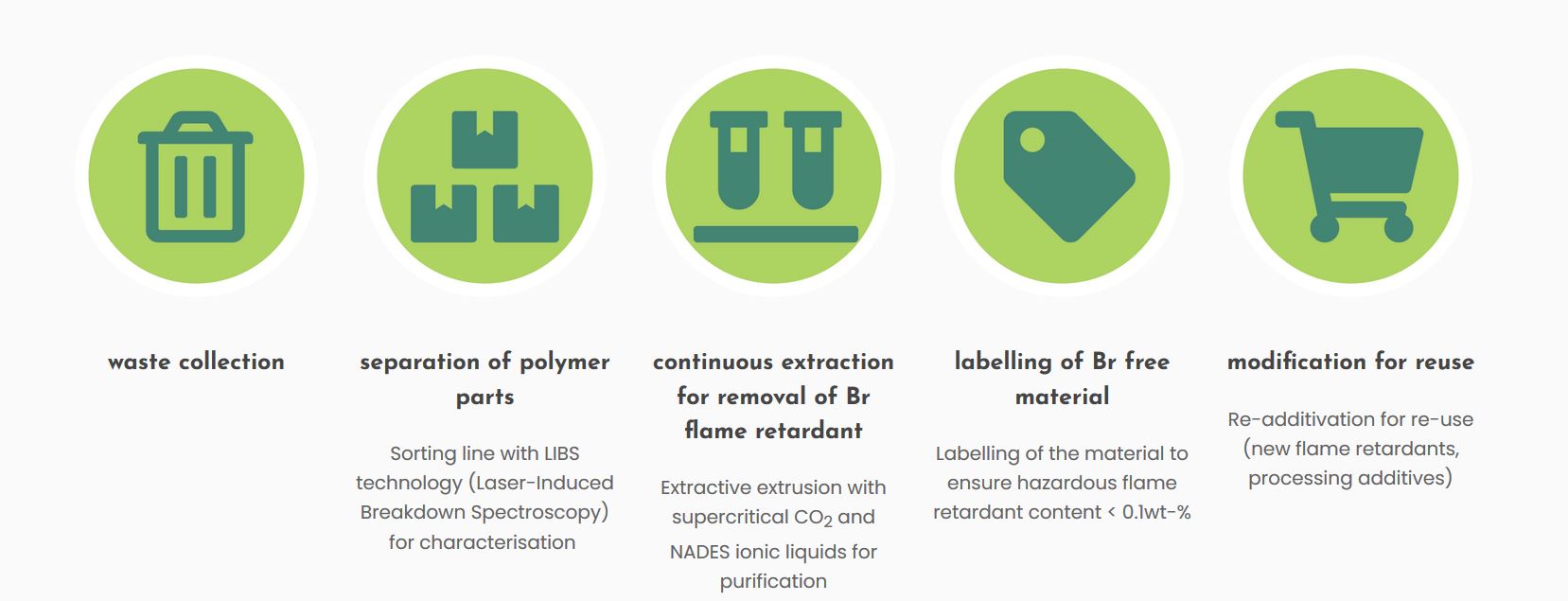
CREAToR
Collection of raw materials, Removal of flAme reTardants and Reuse of secondary raw materialsPolybrominated substances such as HBCD, PBBs and PBDEs show excellent flame retardancy and have been used in various industrial products for many years. Frequently, these flame retardants were applied in polystyrene-based plastics such as PS, EPS, XPS and ABS, which were used as construction insulating materials, packaging materials or in electronic devices. Today we know that these polybrominated flame retardants are environmentally harmful and they are considered as persistent organic pollutants (POPs), which have been banned by the European Union. This bears a problem for the developing circular economy, in which plastics recycling plays an essential role. Before old building materials and electronic devices can be recycled, the problematic flame retardants must be removed.
In the consortium of the EU project CREAToR, the entire process chain along the recycling process is available. Waste from construction, electronics and aeronautical sector is collected and separated using newly developed methods. The bromine-contaminated fraction can be identified via NIR and LIBS (laser-induced breakdown spectroscopy) and is separated from the non-contaminated waste stream. The contaminated fraction is then cleaned up by applying extractive extrusion processes, a method which uses e.g. supercritical CO2 and NADES ionic liquids in the hot polymer melt for removing the pollutants. The purified material can then be modified and re-granulated for new applications.
TCKT is involved in this ambitious project in various work packages and deals with the analytical determination of the residual bromine content, as well as with the modification of the recycled plastics with the aim of producing high-quality products from recyclates. The project is supported by the EU through the program Horizon2020. For more information please check https://www.creatorproject.eu/.





